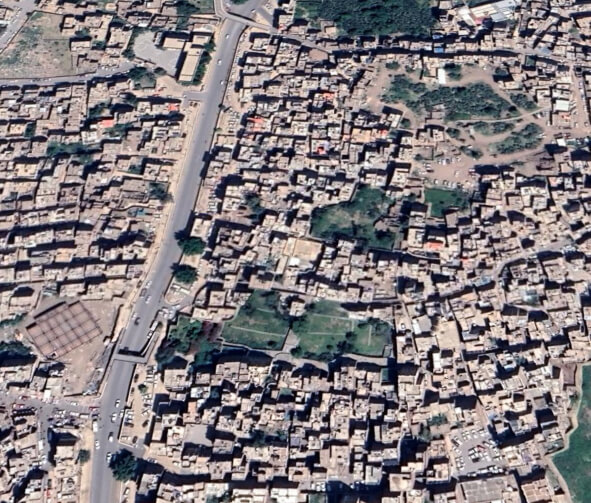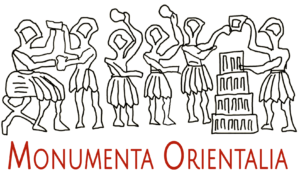
Al-Jalā’ Mosque – Old Ṣan‘ā’
مسجد الجلاء – صنعاء القديم ة
Monument description
Al-Jala’a Mosque is one of the well-known mosques in the Old City of Sana‘a, and its fame goes back to the fact that it was established in the place of a Knesset, in a neighborhood that was known as the Jewish Quarter, Al-Sa’ila and Al-Quzali areas. On the north, the Mosque is bounded by the road leading from Al-Sa’ila to Al-Quzali neighborhood, Al-Jala’ bathroom and Al-Mut’a’ garden; on the south the other road that also connects Al-Sa’ila with Ibn Al-Hussein Mosque located in Al-Qazali, also and passing from the vicinity of Al-Jala’a orchard and Ibn Al-Hussein orchard. On the east, the Monument is separated by the internal branch road to the Mosque, the houses of Al-Ansi and Bayt Al-Durani. As for the western side, the houses of Bayt Hajar and Bayt Zarjis.

Architectural and cultural value
Construction style and built date: Al-Jalaa Mosque is located in old Sana’a, so the components of the buildings and facilities in the mosque will not differ from its environmental center that embraces it. And the building material for disinfectants, especially the internal parts. He ordered the construction of this mosque, Imam Al-Mahdi Ahmed bin Al-Hussein bin Al-Qasim (in the year 1091-1680 AD) in the place of the Jewish Knesset, after this same Imam expelled the Jewish community from the city of Sana’a.
Components of the Mosque: The landmark consists of a Prayer Hall, a southern porch, roofed sanctuaries
attached to the western wall of the Mosque, an orchard on the southern side, and a well about 500 meters southeast of the Mosque (next to Ibn Al-Hussain Mosque). The road leading to Al-Hussein Mosque. The Mosque also has modern bathrooms established on its southwestern side, built in the place of previous settlements. The Mosque had other open Ablution Unit next to the entrance to the sanctuary, preceded by a small pond, but it was removed and its pond was filled up.
- Justifications for intervention:
- 1 – Neglecting the competent authorities in carrying out periodic restoration work due to the lack of budgets for the repairs.
- 2 – Preserving the monument from disappearance and stopping the damage caused to the monument from expanding.
- 3 – Restoration of the damage to the mosque resulting from the flight strikes of the northern part of the old city of Sana’a.
- 4 – Contribute to the restoration of damaged monuments in a proper manner in order to keep Old Sana’a on the UNESCO list.
- Monument conditions:
- The monument is generally in good preservation condition, however there are some obvious signs of damage that need urgent intervention to preserve the monument.
- Treatment:
- The monument needs urgent intervention for a complete restoration process before the monument disappears due to the absurd interventions of some individuals.
– The stone buildings are not in the eastern expansion walls. - – The obliteration of the inscription tapes in the western wall
- – Cladding stone buildings with plaster randomly, especially in the northern facades, the roofs of the yoghurt peaks, and the external walls
- – The spread of moisture in the foundations of buildings and the eastern, western and southern walls.
- – The doors of the wall cupboards were damaged and some were lost.
- – Paving the entrance and the basement floor with sawn stone and cement.
- – Removal of the vaulted structures on the southern side and the construction of modern bathrooms in their place from cement concrete and the use of saw stone and ceramic tiles.
- – Stack tools, materials, waste and dust inside the internal and external corridors of the purifiers, and close the door and the external southern corridor.

Countries






